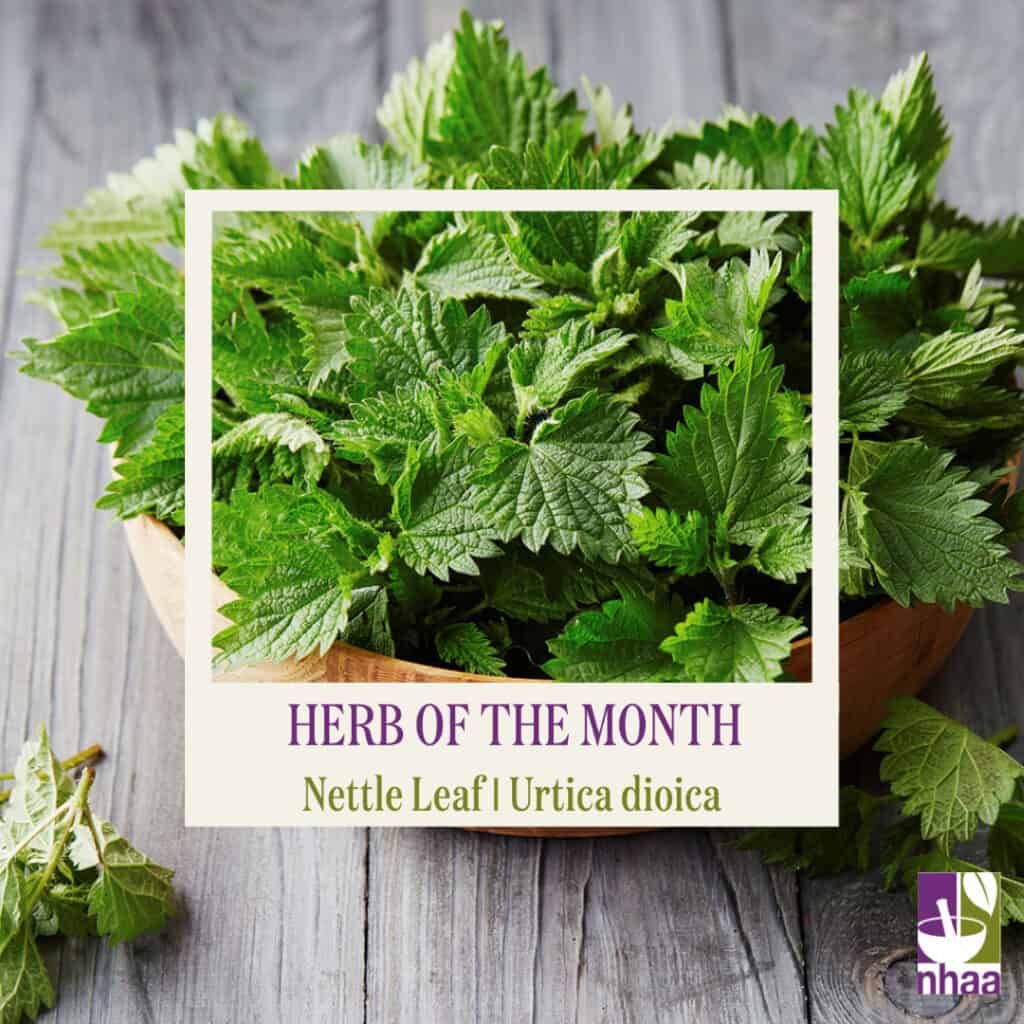
🌿 This month’s herb of the month is Nettle Leaf or Urtica dioica.
🌿 What does nettle leaf do? A better question might be, what doesn’t nettle leaf do. As herbalist David Hoffman has said, “When in doubt, choose nettle.”!
🌿 Botanical name and description:
Nettle a.k.a. stinging nettle (Urtica dioica) is herbaceous perennial plant that grows wild in temperate climates throughout the world. Characterised (as its name suggests) by the fine stinging hairs that cover its leaves and stems, the plant has dark green, opposite, serrated leaves that are triangular or heart shaped, long clusters of small pale flowers and seeds, and it grows up to 1.5m tall. It’s commonly found growing in damp, shady areas, particularly in disturbed soils.
🌿 History and traditional use:
Nettle leaf has a very long history of therapeutic use, which dates back to at least Ancient Roman times. One documented use during these times was for the alleviation of arthritic/rheumatic conditions, and stories abound of ancient Romans applying the stinging leaves and stems of the herb topically as a counter-irritant, to stimulate circulation and relieve pain and swelling. Other traditional uses for nettle leaf in Western herbal medicine include for skin eruptions, nose bleeds, and uterine haemorrhage.
The roots and seeds of the herb have also long been used medicinally, however, these will be the subject of another herb of the month!
🌿 Actions and usage today:
Among its multiple actions, nettle leaf is valued for its anti-rheumatic, anti-allergic (anti-histaminic), depurative and styptic actions. In addition to its use in arthritic/rheumatic conditions, the herb is commonly prescribed for allergic conditions such as seasonal allergic rhinitis (hay fever), allergic and other skin conditions, such as eczema/dermatitis, hives and acne, and less commonly for conditions characterised by excessive bleeding, including gastrointestinal and uterine bleeding, and nose bleeds. Nettle leaf has also long been valued as a mineral rich nourishing tonic, and the herb is commonly prescribed as a supportive remedy (in tisane or food form) for conditions such as iron deficiency, to restore energy in people experiencing prolonged stress and fatigue, to facilitate recovery from illness, and for additional nutrition during pregnancy and breastfeeding. The herb is also reputed to strengthen the hair, nails, skin, teeth and bones.
🌿 Science and clinical trials:
A number of research studies to date have reinforced some of the above traditional uses of nettle leaf, including for the relief of arthritis pain and dysfunction, and allergic rhinitis.
More recent studies have explored the potential benefits of nettle leaf in chronic disease states such as hypertension and diabetes. One small (29 subjects) but intriguing randomized controlled trial compared the antihypertensive capacity of several wild plant species commonly used in Lebanon over a period of 16 weeks. The results of the trial revealed that participants treated with nettle leaf extract experienced significant reductions in systolic, diastolic and mean arterial blood pressures, with the researchers stating that nettle is effective and safe, and has “…promising potential as a phyto-therapuetical approach for the treatment of mild hypertension.” (1). Another recent randomized double-blind placebo-controlled clinical trial conducted in patients with type 2 diabetes mellitus compared the effects of nettle leaf extract in 46 patients with a placebo group (n = 46). Results indicated that the extract effectively lowered fasting glucose, 2 hours postprandial glucose, and HbA1c, with the authors concluding that nettle “…may safely improve glycemic control in type 2 diabetic patients needing insulin therapy.”
On an entirely different note, and further demonstrating the diversity of nettle leaf’s applications, another intriguing double blind randomized controlled trial conducted in 2019 investigated and compared the effects of nettle leaf to acupuncture, combined therapy (nettle leaf and acupuncture) and placebo on hot flushes and quality of life in 68 postmenopausal women experiencing at least 20 hot flushes per week. The researchers concluded that treatment with nettle leaf was as effective as acupuncture in decreasing menopausal hot flushes and increasing the quality of life of postmenopausal women (interestingly, combining nettle leaf and acupuncture did not add to the beneficial effects of either).
1. Samaha AA, Fawaz M, Salami A, Baydoun S, Eid AH. Antihypertensive Indigenous Lebanese Plants: Ethnopharmacology and a Clinical Trial. Biomolecules. 2019 Jul 20;9(7):292. doi: 10.3390/biom9070292. PMID: 31330767; PMCID: PMC6681041.
2. Kianbakht S, Khalighi-Sigaroodi F, Dabaghian FH. Improved glycemic control in patients with advanced type 2 diabetes mellitus taking Urtica dioica leaf extract: a randomized double-blind placebo-controlled clinical trial. Clin Lab. 2013;59(9-10):1071-6. doi: 10.7754/clin.lab.2012.121019. PMID: 24273930.
3. Kargozar R, Salari R, Jarahi L, Yousefi M, Pourhoseini SA, Sahebkar-Khorasani M, Azizi H. Urtica dioica in comparison with placebo and acupuncture: A new possibility for menopausal hot flashes: A randomized clinical trial. Complement Ther Med. 2019 Jun;44:166-173. doi: 10.1016/j.ctim.2019.04.003. Epub 2019 Apr 4. PMID: 31126551.